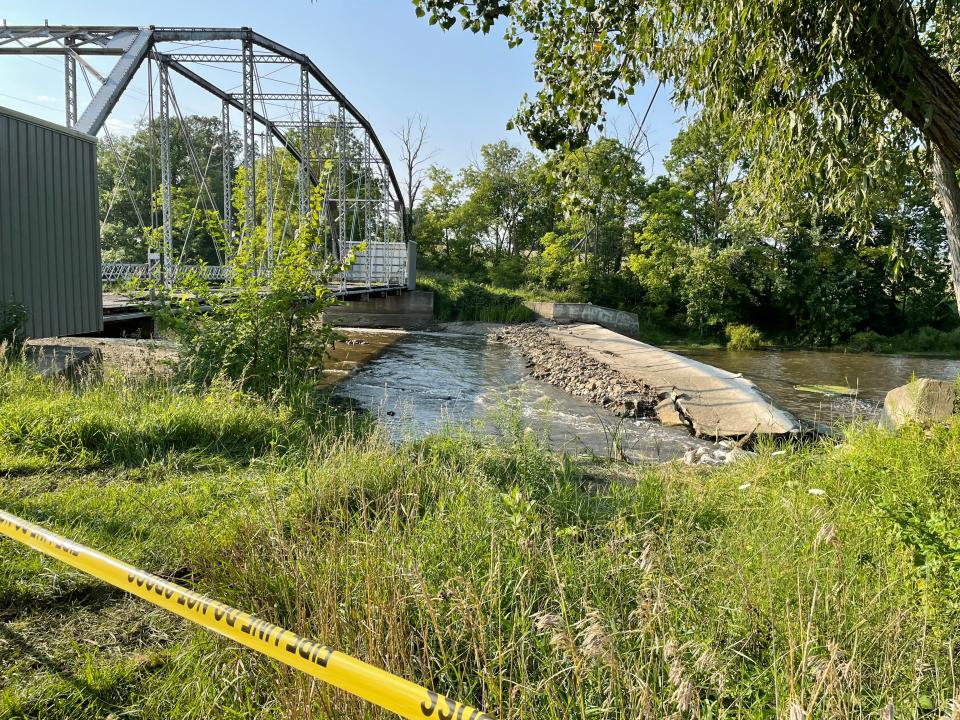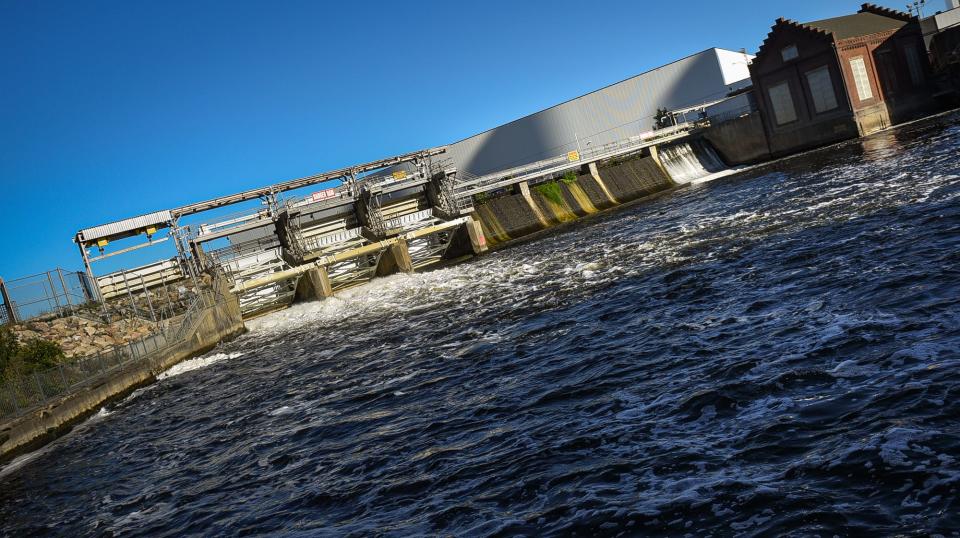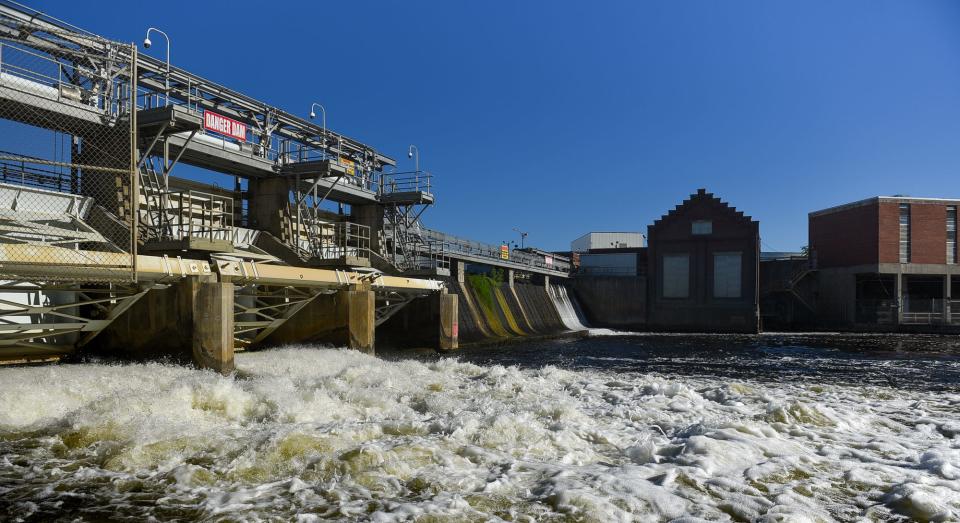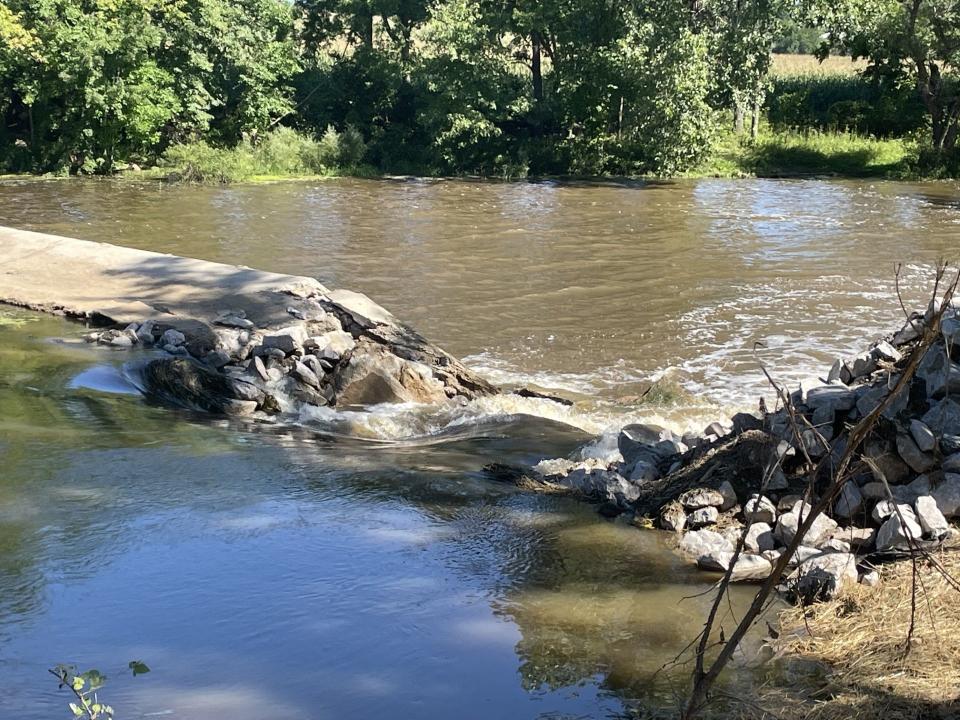Elsie dam was 'ticking time bomb.' Many other dams reach end-of-life cycle
DUPLAIN TWP. — The Elsie dam that failed in August was a "ticking time bomb" and a "foreseeable failure" that could cost the small township more than a million dollars to replace or remove, a state official said.
The dam on the Maple River, just west of the village of Elsie, was rated in unsatisfactory condition, the worst in the Greater Lansing area, but it was also a low risk to create downstream damage, said Luke Trumble, a dam safety supervisor with the Michigan Department of Environment, Great Lakes and Energy.
There are 20 dams in Ingham, Eaton and Clinton counties, with an average age of about 60 years, less than the state's average of 71 years. Of those, 14 have received "satisfactory" ratings, the best possible, according to a state database.
Two of them, the Erickson and McElmurry Lake dams in Eaton County, do not have any inspections recorded. The Rose Lake dam is in poor condition. Three dams — Lake Lansing and Mason Wildlife in Ingham County and Alward Dam in Clinton County — are in fair condition, a step worse than satisfactory. The Elsie dam was considered unsatisfactory, the worst ranking, before a chunkof the dam split off on Aug. 17.

As dams across the region and state age and move past their predicted life expectancy, officials and residents are grappling with the cost of maintaining them or a decision to remove them entirely.
"A lot of dams are coming toward the end of their life cycle," Trumble said. "And a lot of owners are coming to terms with that."
Ingham County officials are scrambling to make emergency repairs to the Lake Lansing dam, which maintains the lake's water level. They are concerned a collapse could cause property damage and flooding of nearby homes. The cost of repairs isn’t yet clear.
The dam is considered low risk if it fails, and ultimately lives aren't expected to be at stake.
Safety of residents plays a major role in how the state rates dams: how dangerous a failure would be for nearby residents and how likely is a failure.
More than half of the dams in the Greater Lansing area have been inspected in the last three years. Inspections are prioritized based on the apparent risks and past inspections, Trumble said.
In the Lansing area, there are three high consequence dams: Two Carrier Creek structures in Eaton County and the Moores Park Dam in Lansing. The three received "satisfactory" inspection reports, the best evaluation possible, according to Michigan dam database.

Dams may be owned by municipalities, companies or private citizens, and the state only steps in when disaster happens, which often will end with the state suing the dam owner to recover the costs so it's better to fix the problems earlier, Trumble said.
The failure of the Edenville Dam near Sanford in May 2020 led to massive damage in Midland County, including destruction of an entire bridge, multiple homes and businesses, and several other dams being damaged or destroyed.
Destroyed dams drained lakes in both Midland and Gladwin counties, leading to 2020 construction cost estimates for restoration that were in the hundreds of millions of dollars — $208 million for the Edenville Dam and Wixom Lake; $92 million for Sanford dam and lake; $24 million for Secord Lake and $14 million for Smallwood.
The cost to repair the aging Elsie dam, which has been considered several times, most recently in 2010, was always too much for the lightly populated township to pay, Duplain Township Supervisor Bruce Levey said.
"There's what we want and there's what we can afford," he said.
Across the nation, aging dams are a growing concern, according to an American Society of Civil Engineers' report.
"The high average age means that the majority of dams will not have been built to current standards, let alone incorporate newer standards that improve their resilience and reduce the risk to downstream areas," the report says. By the end of the decade, the report said, more than 70% of the nation's dams will be more than a half century old.
More than 10% of the state's dams, 272 of them, are over a century old. But that percentage could be higher: The state database tracks 2,548 dams, but only 1,800 of those have a completion date. The state's oldest dam, Parker Dam in Washtenaw County, is 200 years old and there are three dozen dams as old or older than the 1840 Elsie dam.
There is no definitive age limit on dams, except that water will always win given enough time, but materials will often dictate how long the dams can be expected to last, Trumble said. Concrete and steel can have a ballpark of a century, but that can be extended with good maintenance or reduced with less active caretaking, he said.
What about the Greater Lansing area dams?

While the 20 dams in Ingham, Eaton and Clinton counties may be aging, that doesn't mean they are likely to fail, said Logan Bailey, a spokesperson for Eaton County, whose drain commission operates two high-consequence dams on Carrier Creek in Delta Township.
"In the latest report, inspectors found that landowners would not be at risk [in case of failure], but the freeway would potentially see consequences," Bailey said.
He said the consequences can be mitigated by the maintenance and inspections.
The other high consequence dam in the area is operated by the Lansing Board of Water and Light at Moores Park. BWL employees monitor surveillance cameras at the dam around the clock and dam operators inspect it daily, the utility said in a statement.
"Over the last two decades, BWL invested in capital projects to repair and update features to ensure the dam is structurally stable to operate for the future," the utility said in a statement.
Elsie's low risk meant it didn't qualify for grants

Grant applications to conduct maintenance on the Elsie dam were rejected, Levey said, because of the low potential consequences of a failure, so the township was never able to pay for the necessary major upgrades.
Trumble said the Elsie dam was forecast as a low consequence failure with a high likelihood of failure happening. Grants tend to go toward dams with high consequences of failure, he said.
"That highlights the point, a lot of folks who own this infrastructure don’t have the means to pay for it," Trumble said. "Grants will never be enough to fully fund our infrastructure needs. Folks can’t rely on grant funding. There has to be proper maintenance of dam infrastructure."
Trumble said he couldn't say which of Michigan's dams is most likely to fail next.
The state has four dams that are listed as both high downstream risk and unsatisfactory inspections, the worst inspection result. All four were involved in the May 2020 dam breaches and are currently being repaired or removed, or will be by 2027. They are not considered to be current risks due to mitigation efforts in the last few years, although the unsatisfactory rankings will remain until the work is finished, Trumble said.
That leaves 10 dams in the next-worst category: High consequence and poor inspection reports, according to the state database.
Greater Lansing dams
Clinton County
Elsie dam, in Duplain Township, built in 1840, has failed
Alward Lake dam, in Clinton County, built in 1944, is a low risk and in fair condition
Lake Geneva dam, in DeWitt, built in 1955, is a significant risk and in satisfactory condition
Rose Lake dam, in Bath Township, built in 1960, is a low risk and in poor condition
Lake Victoria dam, in Laingsburg, built in 1961, is low risk and in satisfactory condition
Thunder Hole dam, in Lebanon Township, built in 1966, is low risk and in satisfactory condition
Sleepy Hollow dam, in Laingsburg/St. Johns, built in 1974, is a significant risk and in satisfactory condition
Eaton County
Narrow Lake, in Brookfield Township, built in 1950, is low risk and in satisfactory condition
Lacey dam, in Kalamo Township, built in 1972, is low risk and in satisfactory condition
Myers-Henderson detention pond, in Bath Township, built in 1992, is high risk and satisfactory condition
Carrier Creek structure A and structure B, in Delta Township, both built in 2008, are both high risk and satisfactory condition
Carrier Creek structure F, in Delta Township, built in 2008, is low risk and satisfactory condition
McElmurry Lakes dam, in Bellevue Township, built in 2007, is a significant risk and its condition has not been rated
Erickson dam, in Windsor Charter Township, is a low risk and satisfactory condition
Ingham County
Moores Park dam, in Lansing, built in 1908, is a high risk and in satisfactory condition
North Lansing dam, in Lansing, built in 1936, is a significant risk and in satisfactory condition
Mason Wildlife dam, in Vevay Township, built in 1960, is low risk and fair condition
Lake Lansing dam, in Haslett, built in 1975, is low risk and in fair condition
Dansville State Game Area dam, in Ingham Township, built in 1986, is low risk and in satisfactory condition
Contact Mike Ellis at mellis@lsj.com or 517-267-0415
This article originally appeared on Lansing State Journal: Elsie dam was 'ticking time bomb.' Many other dams reach end-of-life cycle

